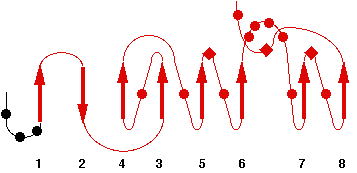2C7B
Name : The Crystal Structure of Este1, a New Thermophilic and Thermostable Carboxylesterase Cloned from a Metagenomic Library
Revelation date : 01-Dec-2005
Family : Hormone-sensitive_lipase_like
Gene_locus : 9arch-q5g935
PDB file : ESTHER: header of PDB entry RCSB: Full entry
Comment
Byun, J.-S., Rhee, J.-K., Kim, D.-U., Oh, J.-W., Cho, H.-S.
Ligand :
References (2)
| Title : Crystal structure of hyperthermophilic esterase EstE1 and the relationship between its dimerization and thermostability properties - Byun_2007_BMC.Struct.Biol_7_47 |
| Author(s) : Byun JS , Rhee JK , Kim ND , Yoon J , Kim DU , Koh E , Oh JW , Cho HS |
| Ref : BMC Struct Biol , 7 :47 , 2007 |
| Abstract : Byun_2007_BMC.Struct.Biol_7_47 |
| ESTHER : Byun_2007_BMC.Struct.Biol_7_47 |
| PubMedSearch : Byun_2007_BMC.Struct.Biol_7_47 |
| PubMedID: 17625021 |
| Gene_locus related to this paper: 9arch-q5g935 |
| Title : Crystallization and preliminary X-ray crystallographic analysis of EstE1, a new and thermostable esterase cloned from a metagenomic library - Byun_2006_Acta.Crystallogr.Sect.F.Struct.Biol.Cryst.Commun_62_145 |
| Author(s) : Byun JS , Rhee JK , Kim DU , Oh JW , Cho HS |
| Ref : Acta Crystallographica Sect F Struct Biol Cryst Commun , 62 :145 , 2006 |
| Abstract : Byun_2006_Acta.Crystallogr.Sect.F.Struct.Biol.Cryst.Commun_62_145 |
| ESTHER : Byun_2006_Acta.Crystallogr.Sect.F.Struct.Biol.Cryst.Commun_62_145 |
| PubMedSearch : Byun_2006_Acta.Crystallogr.Sect.F.Struct.Biol.Cryst.Commun_62_145 |
| PubMedID: 16511287 |
| Gene_locus related to this paper: 9arch-q5g935 |
Representative scheme of Prolylcarboxypeptidase structure and an image from PDBsum server

